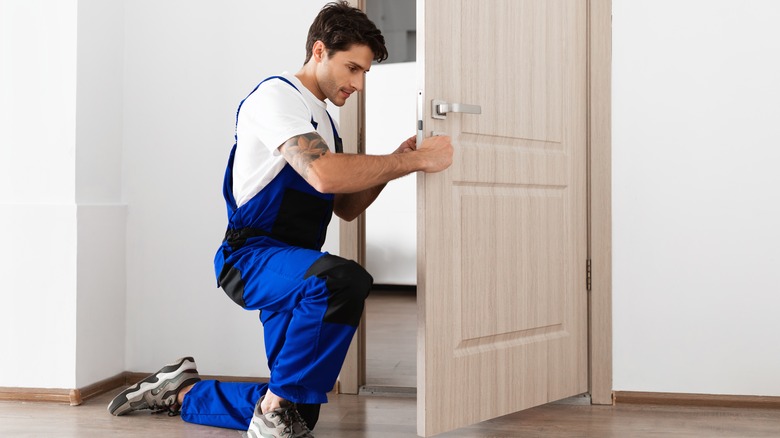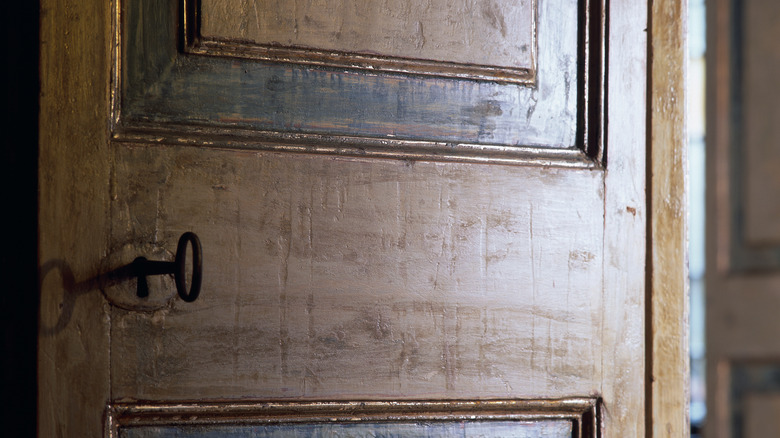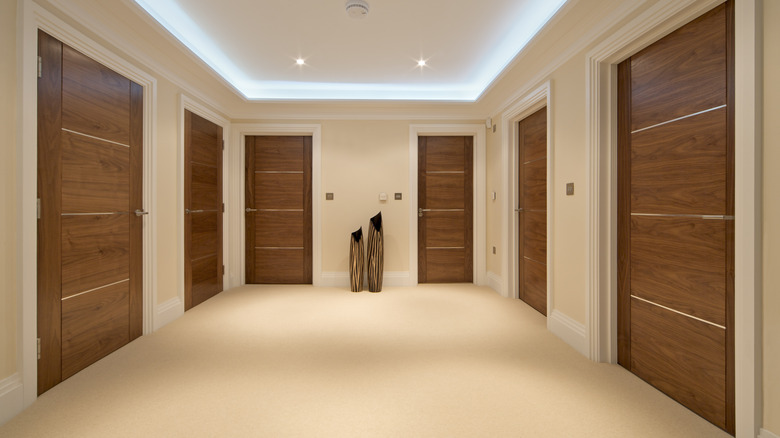The Unfortunate Drawbacks Of Installing Hollow-Core Doors
A hollow-core door is just what it sounds like. It's a door that isn't made from a single piece of wood but is hollow inside. These doors have some benefits, including their lower cost and ease of use since they are so light. Yet, there are also some drawbacks to installing hollow-core doors over solid doors, including their higher likelihood of being damaged and the lack of soundproofing they offer (you'll hear everything through these doors). Another big drawback is that you don't have as much flexibility in how you care for, modernize, and update them. While you may be able to paint them, you won't be able to treat them like you would a wooden door by sanding and refinishing them.
Generally speaking, it can be tempting to install hollow-core doors because installing an interior door that is this lightweight tends to be easier to do (you won't break your back trying to carry it into the house either). They are also much more affordable when considering your home renovation budget, with some costing under $100. Before you make this decision though, take the time to compare both hollow-core doors and solid wood doors to determine which is going to offer the best immediate and long-term benefits to your home.
These thin doors limit customization flexibility
A hollow-core door isn't actually fully hollow. Most have a honeycomb, web-like structure in them, but unlike a solid wood door, that structure is made of a cardboard-like material. Then, the manufacturer places a veneer or, in some cases, a fiberboard over the top of the internal structure. This structure is what makes them so light. Don't expect all solid-wood doors to be a slab of wood from a tree, though. Most have some components of synthetic wood composite in them (unless you buy them specially).
The construction of a hollow-core door makes it impossible to sand down the door to remove the existing exterior to refinish them. It also makes it hard to do much more than just paint them — and even that can be challenging if you purchase the wrong type of paint or the existing paint doesn't allow for good adhesion.
Also important, these doors are harder to maintain. For example, they are easy to damage. Just ask anyone that's had a child run full force into one playing a game of catch in the hallway! All of the dings and damages are hard to remove since you can't sand the door down. And, if you buy a cheap door, wiping them down too hard could even damage the exterior paint.
When you shouldn't invest in hollow-core doors
There are some situations where these doors are the right fit, such as when you need to replace a door inexpensively. They also are easier to install, which means you probably don't have to pay a professional to do the work. There are other times when hollow-core doors are not the right choice. Do you want to enhance the privacy in your home, especially in areas like your bedroom? That's when you'll want a solid core door that will block out most sound transfer. Also, in some areas of the home, like the bathroom, having a hollow-core door isn't ideal because they are more likely to absorb moisture and become damaged.
Moreover, these doors are also not ideal for exterior doors because they don't provide ample resistance to changing temperatures (you'll feel that cold draft coming in during the middle of the winter months). Also, note your goals for selling your home. A solid wood door that's in good condition could help enhance your home's resale value over a beat-up and damaged older door. Choosing the best types of doors for your home means considering the full picture, not just that one door.


